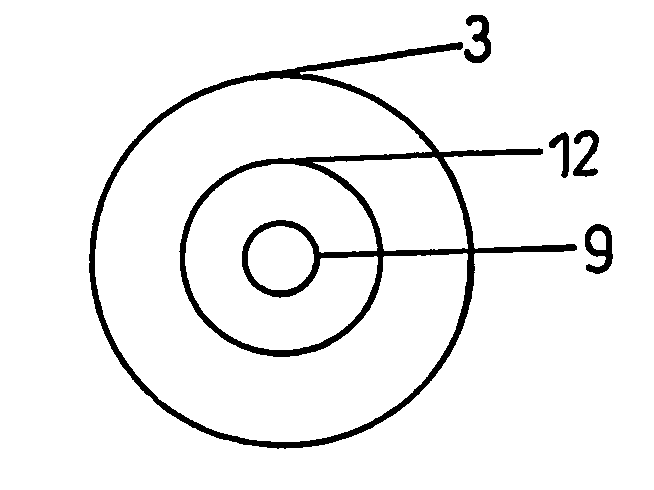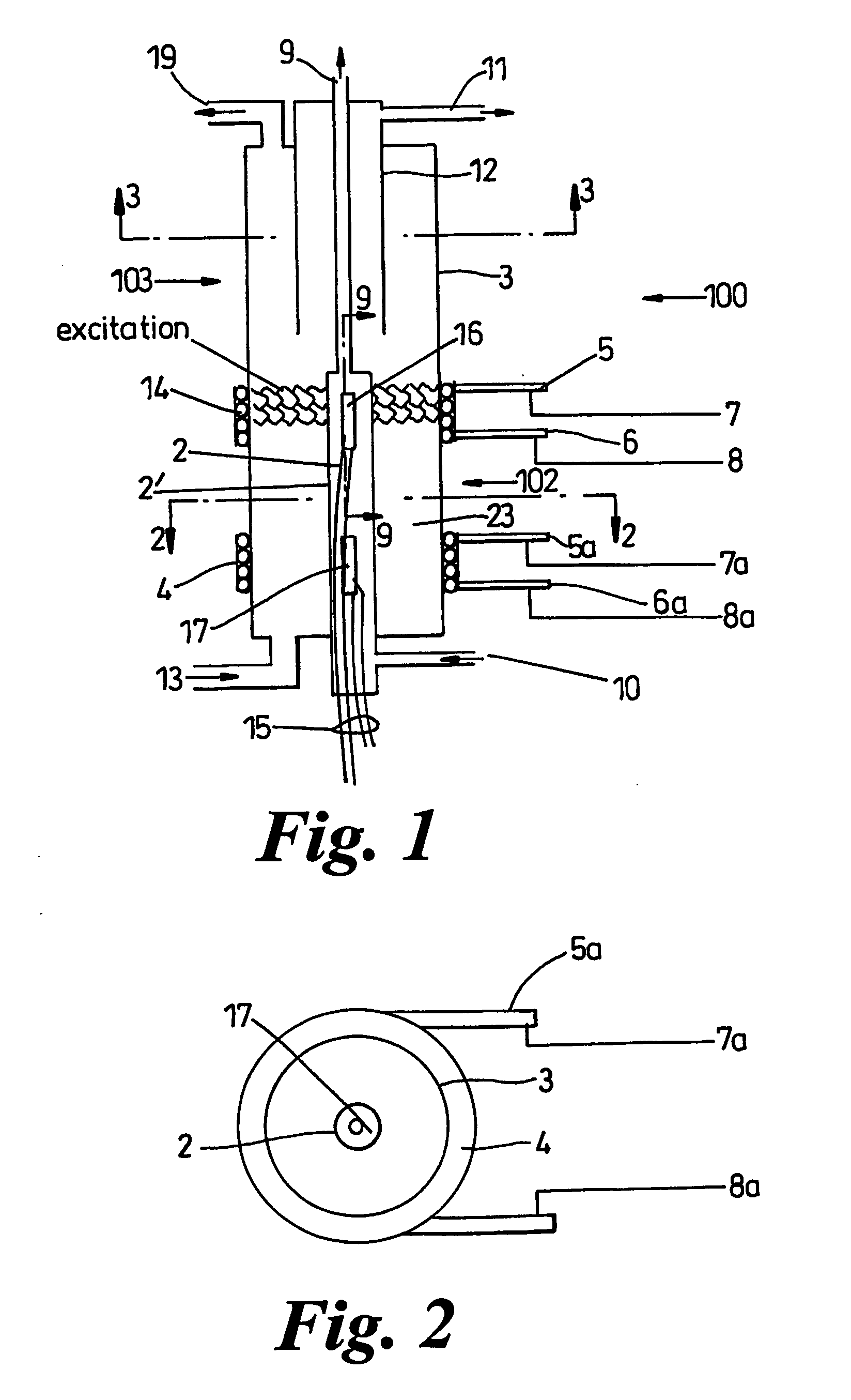Particle separation
a technology of particle separation and separation efficiency, applied in the direction of lorentz force separation, open gradient mangetic separator, water/sludge/sewage treatment, etc., can solve the problems of high cost, high pressure, and limited amount of usable water in the world, so as to improve the speed and separation effectiveness, reduce the cost, and weaken the molecular bond of the targeted material
- Summary
- Abstract
- Description
- Claims
- Application Information
AI Technical Summary
Benefits of technology
Problems solved by technology
Method used
Image
Examples
Embodiment Construction
[0110] The invention contemplates a laminar particle separator for liquid-liquid separation, and this will be described with reference to FIGS. 1 to 4. The lower section (102) of the laminar particle separator (100) is made of a non-metallic housing (3) with an annulus (23) defined between the wall (2′) of a chamber (2) and housing (3). Optionally at least one anode (16) is located in chamber (2) and is cooled with a coolant that circulates around the anode from a first coolant inlet (10) to a coolant outlet (9) leading from the chamber (2).
[0111] The laminar particle separator can use a DC or pulsed DC power source (15), which is preferably pulsating. If the anode (16) is used, the power source (15) is connected to the magnetic coil (14) disposed in the chamber, the magnetic coil (14) being cooled with a second coolant supply. In FIG. 1, a second magnetic coil (4) is also shown wrapped around the housing (3).
[0112]FIG. 1 shows the second coolant streams inlet (5) and outlet (6) o...
PUM
| Property | Measurement | Unit |
|---|---|---|
| magnetic fields | aaaaa | aaaaa |
| magnetic fields | aaaaa | aaaaa |
| pressures | aaaaa | aaaaa |
Abstract
Description
Claims
Application Information
 Login to View More
Login to View More - R&D
- Intellectual Property
- Life Sciences
- Materials
- Tech Scout
- Unparalleled Data Quality
- Higher Quality Content
- 60% Fewer Hallucinations
Browse by: Latest US Patents, China's latest patents, Technical Efficacy Thesaurus, Application Domain, Technology Topic, Popular Technical Reports.
© 2025 PatSnap. All rights reserved.Legal|Privacy policy|Modern Slavery Act Transparency Statement|Sitemap|About US| Contact US: help@patsnap.com



